If you had to list elements of a great product, what would you name?
Features, customer service, marketing, and proven results are some of the apparent answers.
However, you shouldn’t forget that excellent documentation has the ability to elevate the product as much as a clever marketing strategy.
Although technical writing has a far broader scope than mere product documentation, there are some common principles that you should adhere to when writing any professional or occupational content.
For instance, technical writing should always be informative, but there are also ways you can make it enjoyable to read without compromising professionalism.
In this article, we’ll go through seven examples of technical writing and examine the elements that make them substantially more effective than average technical docs.
White Paper
White papers are great examples of how technical writing can contribute to the perception of your company.
A white paper is more than an informative tool; you can also use it to attract attention and generate leads.
11:11 Systems, an IT company, frequently capitalizes on this quality and produces excellent white papers, such as this one about cloud-based back-up and disaster recovery.
Developer Documentation
Who says that code-heavy developer documentation has to be boring? GitHub is the definitive proof of the opposite.
It may sometimes seem like sprucing up your technical documentation is futile.
After all, code is the primary reason people read it, and you can’t (and shouldn’t) really make the code entertaining.
However, GitHub manages to make this type of technical writing approachable by combining a clear layout with a multitude of screenshots and examples.
You can see how GitHub organizes information in the image below.

Source: GitHub
On the left side, you can see a clickable and expandable table of contents that makes navigating through the content easier.
Each part of the documentation is prefaced with an overview and definitions you’ll need to understand the section.
There are also step-by-step instructions so that the readers can’t get lost when setting up features.

Source: GitHub
GitHub also pays attention to the language.
For instance, not everybody finds API documentation particularly exciting, but GitHub still manages to inject the personality of their brand into their tech documentation.
Here’s an example.

Source: GitHub
You can also find phrases such as:
“The tokens in these examples are fake and the names have been changed to protect the innocent.”
So, the company occasionally uses humor to make the technical components less intimidating while still maintaining professionalism.
If your business needs to shape up developer and technical docs, you’ll be glad to hear that there are tools that let you emulate GitHub’s documentation outline.
For instance, Archbee, our product documentation platform, can help you build a clear, intuitive knowledge base you can either keep available only internally (within your company) or share with the world.
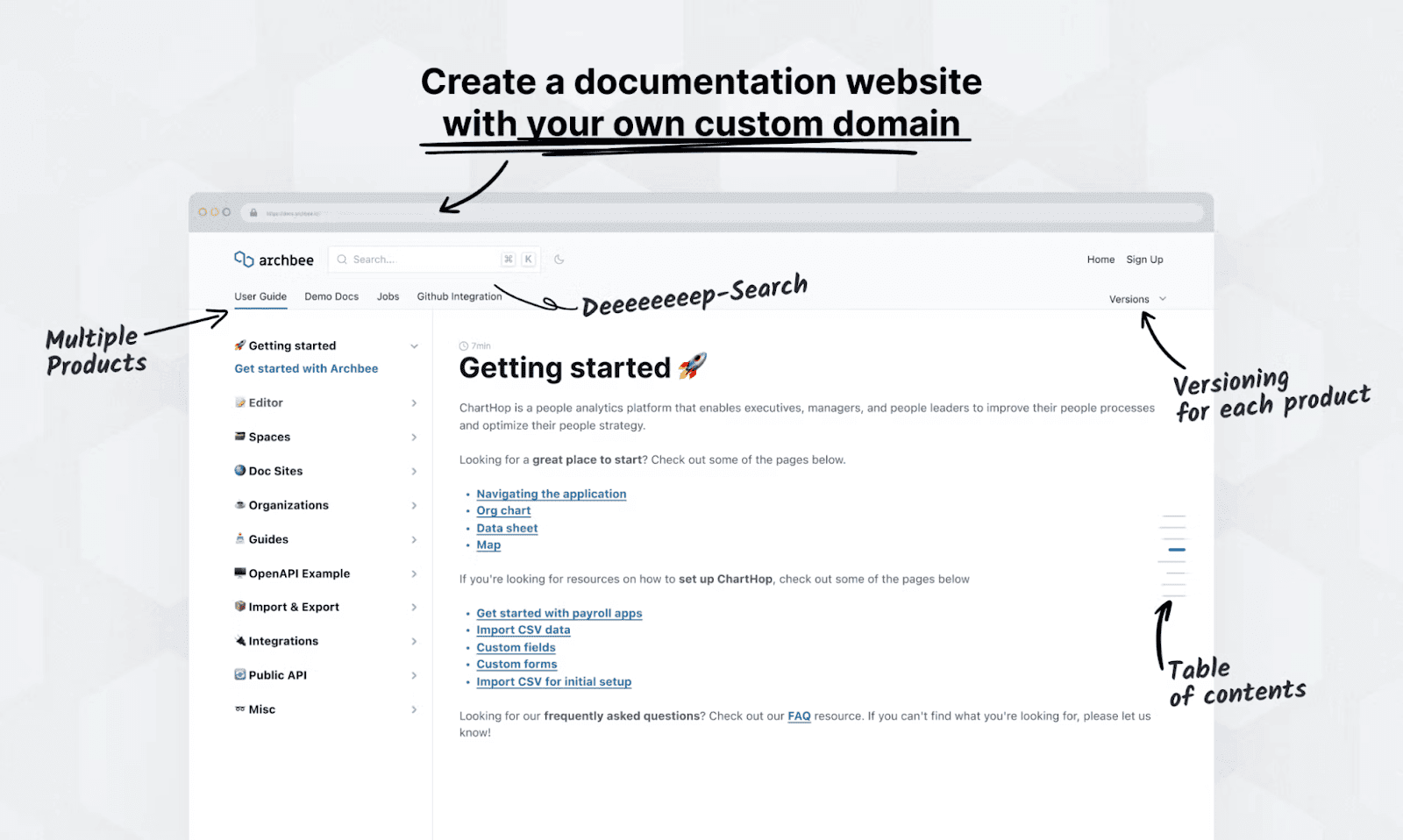
Source: Archbee
Unfortunately, we can’t supply your developer documentation with GitHub-like zingers, but we can make it organized and engaging.
Legal Disclaimer
Frequently overlooked as a part of the technical writing category, a legal disclaimer is an essential piece of documentation your business needs for protection against legal claims.
Jonathan Fields, a media producer, has an excellent example of a legal disclaimer on his website.
If you’ve ever browsed copyright, fair-use, or other types of legal disclaimers, you’ve probably noticed they’re loaded with legalese.
Indemnification, herein, notwithstanding are just some of the words that obfuscate the meaning of what is said.
When Jonathan Fields first created his affiliate disclaimer, he wanted to avoid the typical structure of legal disclaimers and write the policy in simple terms, boosted with a dose of humor.
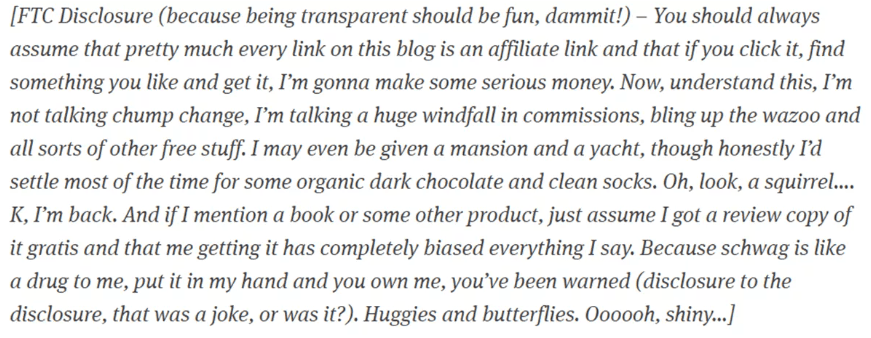
Source: Authority Hacker
However, Fields’ legal team probably wasn’t too fond of the disclaimer that you see above, seeing that it has since been replaced with a more subdued version.

Source: Jonathan Fields
As the screenshot of his current affiliate disclaimer shows, it’s possible to find a balance between starchy legalese and plain language in legal writing.
Fields started the disclaimer by thanking the audience, making the document sound more personal. The rest of the disclaimer describes the affiliate policy in clear terms.
The disclaimer is the perfect example of how technical writing doesn’t have to be yawn-inducing, even when legal documents are concerned.
Still, if you don’t want to spend hours drafting a legal disclaimer, you could hire a legal writer to make sure you’ve covered all crucial areas while maintaining the tone of professionalism.
Another option would be to automate the process with a policy-generating tool like this one.

Source: Free Privacy Policy
The Free Privacy Policy tool generates different types of legal disclaimers, helping you meet standard compliance requirements. As its name suggests, the tool is free.
So, if you think your current legal disclaimer needs a makeover, you can find inspiration in Jonathan Fields’ policies. Just make sure you’re referencing the updated version!
Medical Paper
Medical writing is a type of technical writing that deals with developing clinical and scientific documentation.
For this section, we’ll analyze a paper published in the open-access journal Stem Cell Reports and see what makes it an excellent example of medical writing.
Let’s start with the title, “Biomanufacturing in low Earth orbit for regenerative medicine”. It’s quite a mouthful, especially compared to the sleek titles we saw in white papers.

Source: Stem Cell Reports
However, the title is still informative, and sums up the topic of the paper.
Next, what sets this medical paper apart from the others is the use of visual elements.
Of course, you’ve already seen black and white illustrations in other scientific papers, but the authors of this one have gone the extra mile and created unique explanatory images to help readers visualize the subject matter.
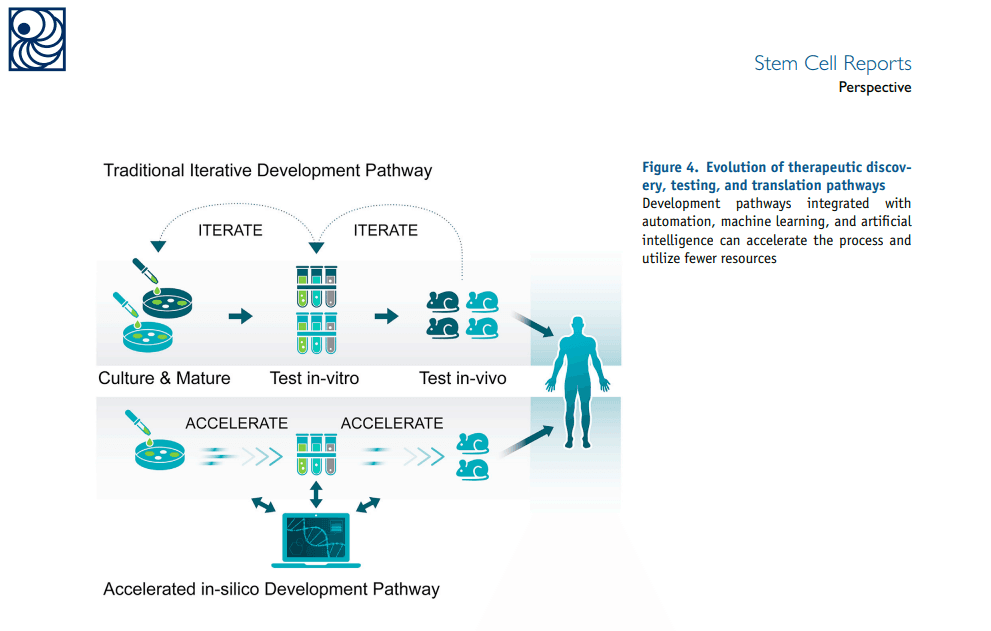
Source: Stem Cell Reports
Since this is a medical paper, we can’t expect it to only contain everyday language.
Still, this paper resorts to jargon only when absolutely necessary, and explanations are frequently provided in brackets, like in the following example:
“Initial discussions regarding gaps centered on the need to gain additional insights on fundamental behaviors of materials (i.e., cells, liquids, and proteins)...”
It’s worth noting that this kind of paper takes more resources to compose.
We aren’t only talking about the costs of research; time is also a significant resource, especially when production involves this many contributors.

Source: Stem Cell Reports
So, make sure you factor in the longer time frame when planning a medical paper.
We hope that this example of technical writing has managed to demystify medical and scientific documentation.
And while these types of documentation will always require specialized vocabulary, note that there are still ways for authors to increase the readability of the texts.
User Instructions
If you read user instructions each time you get a new appliance or an app, you belong to the minority of people.
There’s a good reason why most people don’t read manuals and instructions: they’re generally monotonous.
ChartHop, a people analytics platform, is a great example of how you can present instructions and other pieces of technical information in an engaging way.
Their user documentation starts with a one-sentence description of the product. No more than that—user instructions aren’t a sales pitch.
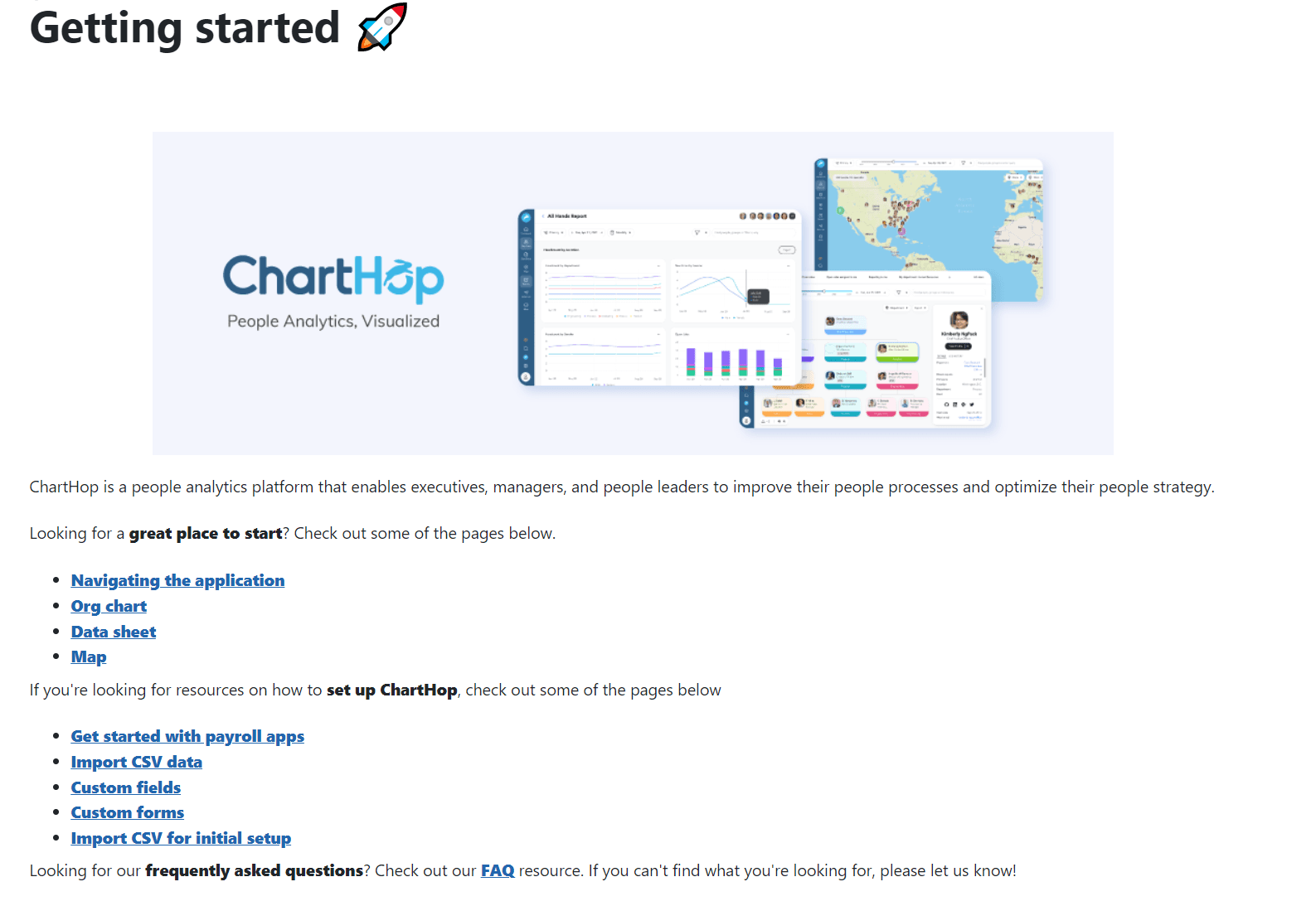
Source: ChartHop
After the brief intro, clients can continue reading about the app or skip straight to setup instructions.
This is a great feature of ChartHop’s documentation you can replicate.
Rather than forcing the readers to go through every single line of text, you should let them browse through those parts of user instructions they find relevant.
Another great characteristic of these user instructions is the glossary.

Source: ChartHop
Technical writing requires specialized terminology, so it’s best to form a knowledge base where readers can always check the meaning.
Lastly, readers often give up reading instructions or manuals because they get overwhelmed with information.
If you’ve ever seen those tiresome three-column texts, you know that’s a format to avoid.
Instead, it’s better to include charts, examples, or illustrations to help readers visualize the data. ChartHop’s documentation does an excellent job with this.
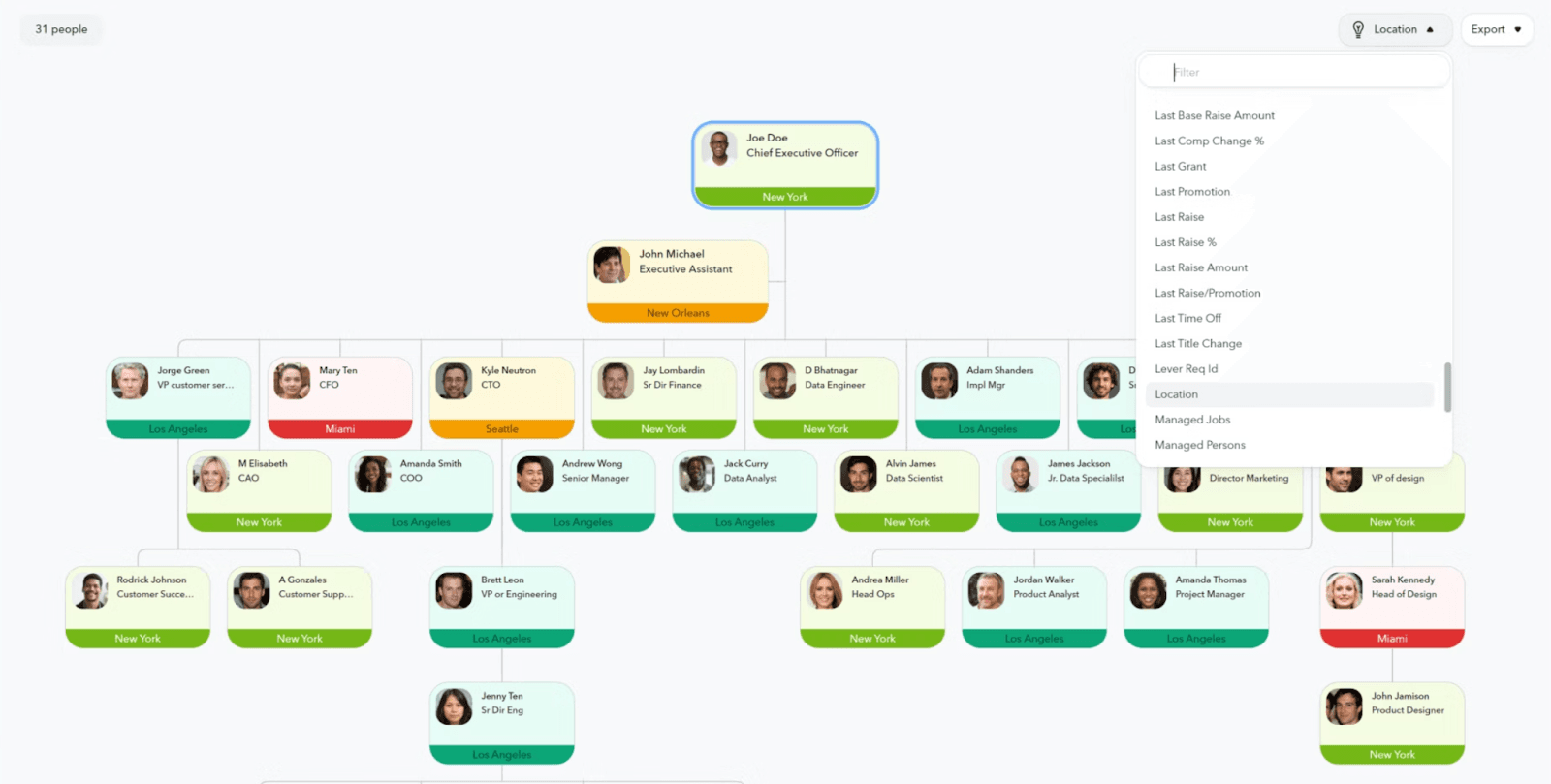
Source: ChartHop
Throughout the instructions, you can find multiple screenshots of using the platform’s features. That’s a better way to demonstrate the product than simply writing about it.
Remember, the better user instructions you build, the fewer calls your customer support team gets.
Archbee has built ChartHop’s documentation base, and we can help you construct yours, too.
Safety Manual
Safety manuals are often challenging to create because this type of technical writing requires you to speak to consumers and experts simultaneously.
The Construction Safety Manual written by the Port of Seattle shows that structuring the information properly lets you do just that.
The manual starts with a note to readers asking them to apply the procedures they read about.
“Please read these procedures and make sure that you fully understand all sections. More importantly, use them to ensure the safety and well-being of your employees. Safety is an essential element of construction at the Port.”
Misinterpreting the instructions in safety manuals can lead to grave consequences.
The Port of Seattle therefore ensures the procedures are laid out clearly and asks readers to implement them.
One of the ways they ensure clarity is by providing a glossary prefacing each procedure. For instance, take a look at the instructions for pile installation and extraction.
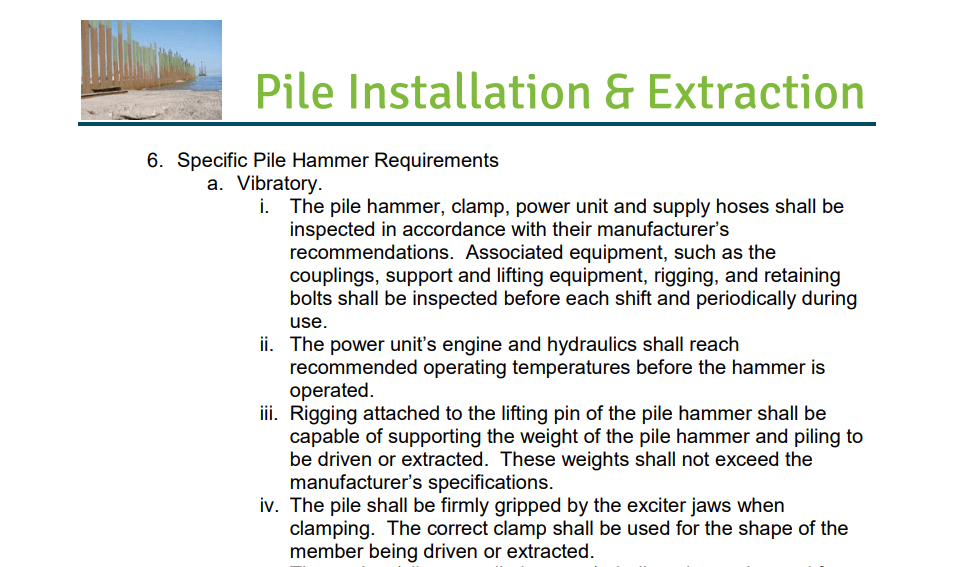
Source: Port of Seattle
A worker specializing in a different field of construction may not be familiar with all these terms, which is why there’s a list of over thirty definitions of tools and methods mentioned in the section.
Additionally, there isn’t a general glossary of terms. Such an exhaustive dictionary would be too long to navigate and probably deter a good amount of users from reading it.
Instead, the manual explains the relevant vocabulary right when you need it, making the text accessible to both professionals and regular staff.
All in all, if you’re concerned about your subject matter being too convoluted to describe clearly, safety manuals like this one should be able to convince you that you can make any topic, no matter how complex, more accessible with the right approach to technical writing.
Onboarding Documentation
That’s right; onboarding documentation is also considered a type of technical writing.
Usually intended for internal users, onboarding documents introduce new employees to the values and practices of the company.
HubSpot’s Culture Code, an employee handbook, is one of the most captivating pieces of technical writing you can find, proving that there’s room for creativity even in the most elaborate of documents.
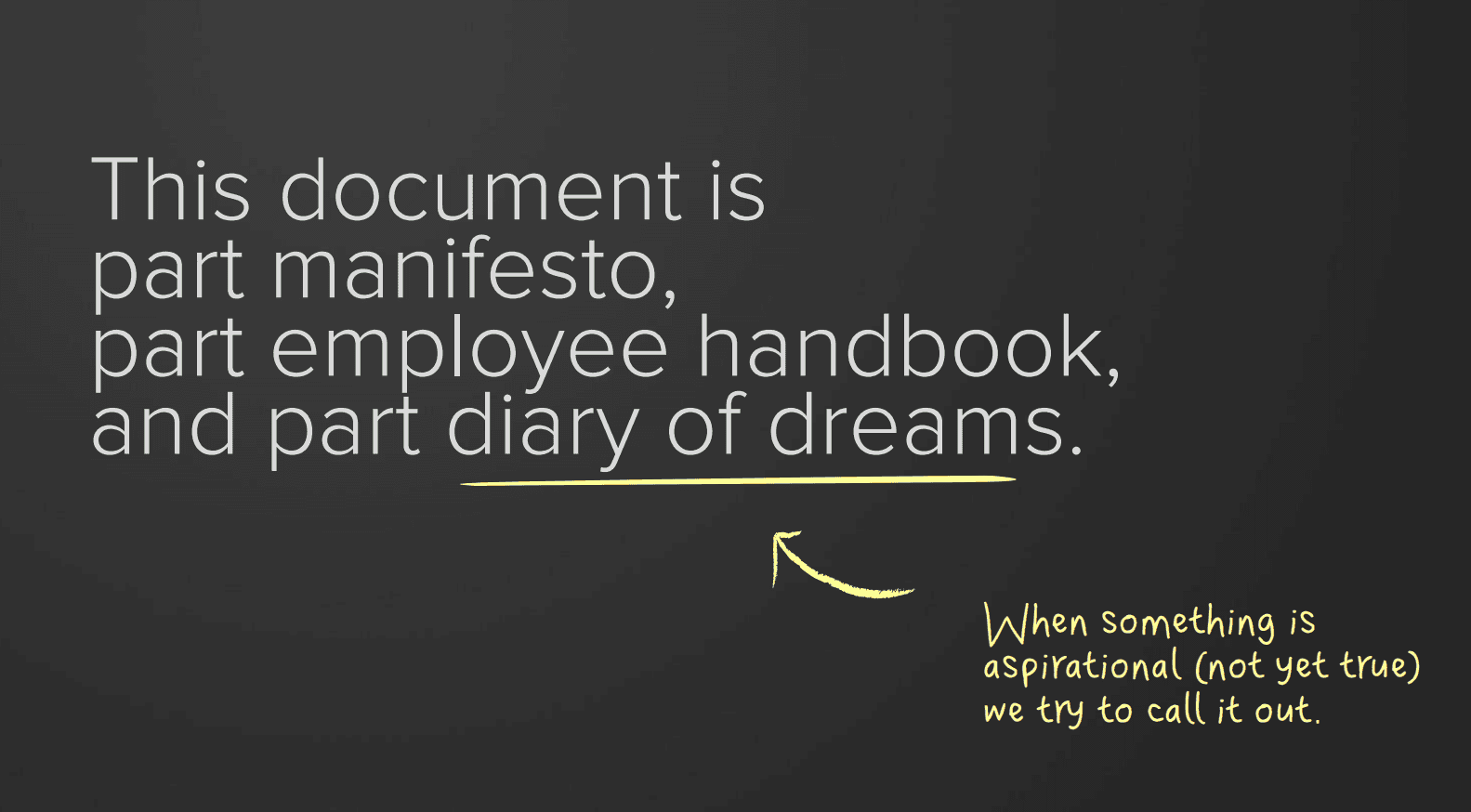
Source: HubSpot
The document consists of 153 bite-size slides—an innovative format of technical documentation you can explore.
Readers who go through the handbook learn what makes HubSpot a successful company and how the employees implement a customer-first approach.
Admittedly, the new employees at HubSpot still have to browse through additional documents before they start working, such as documents defining salary and workflow for specific positions.
Still, if you place as much emphasis on core values as HubSpot does, it makes sense to dedicate an entire piece of documentation to beliefs and principles.
An additional element that makes the Culture Code a handy onboarding supplement is describing work principles in a lighthearted tone. Take a look at the following slide.

Source: HubSpot
As you can see from this short statement, there are no secrets regarding the work processes.
Being upfront with such values allows new hires to adjust to the work environment where all moments of success and failure are shared.
To date, the document has received more than five million views, so it’s undoubtedly worth giving a read. If you do, you may get inspired on how to present corporate data in a charismatic way.
Conclusion
As you can see, listing accurate information is not the only aspect of technical writing.
Your text has to be accessible to the target audience, whether you’re writing for medical professionals or construction workers.
Each of the examples we’ve shared stands out for its informative or educational value. There are subtle traces of entertainment value, too.
So, we hope you’ll be able to use these as inspiration for your next technical writing piece.
Try Archbee's full range of features with our free 14-day trial.
Frequently Asked Questions
Great products solve real problems and are easy to adopt, use, and trust. Key elements include: - Thoughtful features that deliver clear value - Intuitive UX and smooth onboarding - Reliable performance, security, and privacy - Responsive customer service and self-serve support - Transparent pricing and proven results (reviews, case studies) - Clear, helpful documentation that reduces friction - Ongoing improvements based on user feedback Don’t overlook documentation—it can elevate your product as much as clever marketing.



